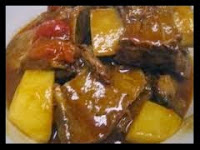“The pen is mightier than the sword.” - Jose Rizal
Jose Rizal is the well-respected national hero of the Philippines. Rizal fight for the Filipinos during the Spanish colonization not by means of bloody revolution but in a peaceful manner by his writings. He wrote articles, poems and novels that depict the cruelties, graft and corruption of the government during his time. Through his intelligent and marvelous works, he defended the Filipino people from Spanish accusations of foolishness and lack of knowledge, Represented the cries and miseries of his country against abusive foreign officials. He attacked the foreign officials not by brutal strength but through the power of his words. Rizal’s popular revolutionary literary masterpieces are a poem entitled “Mi Ultimo Adios” (My Last Farewell) and two novels, “Noli Me Tangere” (Touch Me Not) and “El Filibusterismo” (The Filibuster).
Noli Me Tangere is the first of the two famous books that Rizal wrote.
The title of the book is a Latin phrase which means “Touch me not!” Lifted from the verse in the bible in John 20:17 where Jesus told Mary Magdalene to never touch him when the woman recognizes him following his resurrection. The book was written and secretly published in the Philippines during the late 1800s.
Chapter three of Noli Me Tangere (“The Dinner”), there was a mention of a dish called Tinola – The Filipino soup made from stewed chicken with white squash, green papaya or potatoes, flavored with ginger and other local spices, and served steaming hot as the first course at dinner.
Crisostomo Ibarra, the main protagonist, was having a dinner party with several prominent characters: the influential man and dinner host, Kapitan Tiyago (Captain Tiago) and the infamous Spanish friar, Padre Damaso (Fr. Damaso). Crisostomo Ibarra was (a person born in countries that are under Spanish colonization), Member of the high class Philippine society, and idealist and a traveled man.
He has attributes and visions identical to that of Rizal’s. The dinner was intended as a celebration for Ibarra’s safe return after his extended stay in Europe to study. quoted was: “… the prosperity or the misery of a people is in direct proportion to its liberties or concerns, and consequently to the sacrifices or selfishness of its ancestors.”
Kapitan Tiyago ordered that tinola be served, Ibarra had the great luck to have been given the meatiest part of the chicken and the giblets (liver and gizzard).
The dishes that he had not eaten for a long time since he go to abroad. Everyone on the table was served with good chicken parts except Padre Damaso.
He was given a chicken neck and wing . The poor friar was served the least favored part of the chicken which could be translated to a great insult during that time.
“Observing all these, Franciscan mashed up some pieces of squash, tasted the soup, dropped his spoon and rudely pushed his plate away.
” Padre Damaso, often negatively described as being fat, arrogant and corrupt Spanish priest, is known for his being notorious and an enemy of Ibarra.
He was the representation of the reigning Spanish government during that time. Being enraged by what happened, he belittled Ibarra's trips abroad which, according to him, were useless since everything that the young man learned outside the country could also be known without having to travel extensively.
The humiliated Ibarra did not argue with the friar but graciously excused himself from the dinner table instead. Kapitan Tiyago tried to stop him but to no avail.
During that night, Ibarra wrote down the following title for a chapter in his Colonial Studies: “Concerning the manner in which the neck and wing of a chicken in a friar’s plate of soup .
” His notes there aroused one of the following observations: “In the Philippines the most unnecessary person at a dinner is he who gives it, for they are quite capable of beginning by throwing the host into the street and then everything will go on smoothly.
Under present conditions it would perhaps be a good thing not to allow the Filipinos to leave the country, and even not to teach them to read.”
INGREDIENTS:
1 whole (2.5 lbs.) chicken, cut into serving slices
1 small green papaya or chayote, cut into wedges
2 small potatoes, quartered (optional)
1 thumb-sized ginger, julienned
4 cloves garlic, minced
1 small white onion, finely chopped
1 L hugas-bigas (rice washing)
3 tbsps. patis (fish sauce)
a handful of chili pepper leaves or malunggay (moringa) leaves
3 tbsps. cooking oil
PROCEDURE:
Heat the cooking oil in a heavy-bottomed pan. Garlic, onion and ginger until translucent and fragrant.
Add the chicken and cook until the color lightens. Add the fish sauce and mix to incorporate the flavors.
Pour-in the rice washing, enough to cover the chicken pieces. Bring the water to a boil and then set to simmer for 30 minutes.
Add papaya or chayote and potatoes. Continue to simmer for 5 to 10 minutes or until the vegetables are soft. Adjust the seasonings.
Remove from heat and then add chili pepper leaves or moringa. Leave aside for 2 minutes.
Transfer in a serving dish and serve warm.

























.jpg)






















